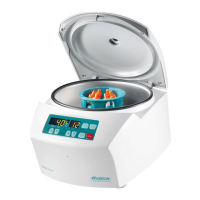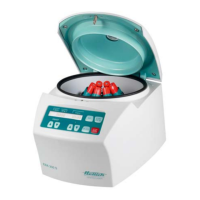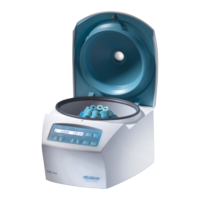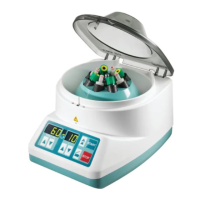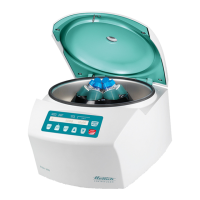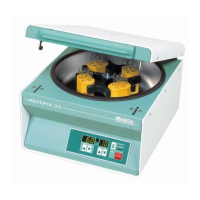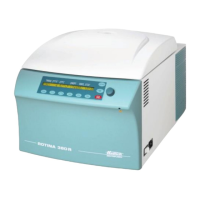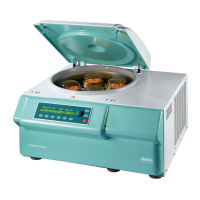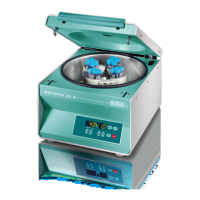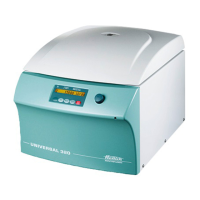■ The tolerance band, i.e. the actual temperature monitor, now
engages when 40 °C is exceeded and 32 °C is fallen short of.
■ If the tolerance band is exceeded or fallen short of, an optical and
acoustical alarm is output, and the potential-fr
ee alarm output is
switched.
Tolerance band monitoring only becomes active after the incu-
bator has reached a temperature within the tolerance band.
■ The user must actively conrm/end this signal.
■ Once the actual temperature lies in the tolerance band again, the
tolerance band monitoring will be active again.
In pr
ogram mode, when the temperatures change, the tolerance
band automatically adapts to the temperature setpoint. Monitoring
starts as soon as the actual temperature is in the tolerance band.
This also applies if there is a temperature change.
A tolerance band alarm is immediately indicated in
normal operation after the tolerance band is
exceeded or fallen short of. After the door opens/
closes, monitoring is deactivated for the set time.
This setting prevents the tolerance band alarm from
going off when loading/unloading the system. The
time setting is set ex works to 60 minutes (after
closing the door) and can be adjusted to your needs
by a service technician.
6.13.5 Temperature guard
The incubator is equipped with a temperature guard in acc. with
DIN12880:2007-05. The temperature guard is for protecting the
incubator (device protection), its surroundings and the sample mate-
rial (sample protection) against impermissible, excessive tempera-
tures.
Class 3.1 Factory setting at +70 °C (device protec-
tion), individually adjustable temperature
(sample protection)
Class 3.2 Factory setting at -10 °C (deactivated),
individually adjustable temperature
(sample protection)
Class 3.3 If both class 3.1 (overtemperature protec-
tion) as well as class 3.2 (undertempera-
ture protection) are activated, this is said
to be class 3.3.
Incubators with cooling Classes 3.1 and 3.2
Incubators without
cooling
Class 3.1
If the electronic temperature regulation fails during operation, the
temperature guard takes over the regulating function.
If a temperature violation of class 3.1 or 3.2 was detected, the incu-
bator regulates according to these set temperature limits by
switching the heating (class 3.1, overtemperature protection) or the
cooling (class 3.2, undertemperature protection) on or off. If the over-
temperature protection of class 3.1 is violated, the heating is

